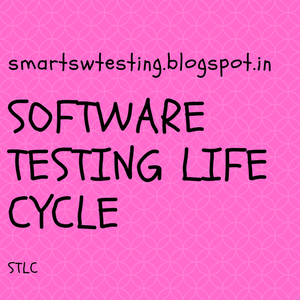Software Testing Life Cycle is a testing process which is executed in a sequence, in order to meet the quality goals. It is not a single activity but it consists of many different activities which are executed to achieve a good quality product. There are different phases in STLC which are given below:
- Requirement analysis
- Test Planning
- Test case development
- Environment Setup
- Test Execution
- Test Cycle Closure
Let us discuss about each phase in detail:
Requirement Analysis
During this phase, test team studies the requirements from a testing point of view to identify the testable requirements.
The QA team may interact with various stakeholders (Client, Business Analyst, Technical Leads, System Architects etc) to understand the requirements in detail.
Requirements could be either Functional (defining what the software must do) or Non Functional (defining system performance /security availability )
.Automation feasibility for the given testing project is also done in this stage.
Test Planning
This phase is also called Test Strategy phase. Typically , in this stage, a Senior QA manager will determine effort and cost estimates for the project and would prepare and finalize the Test Plan.
Test Case Development
This phase involves creation, verification and rework of test cases & test scripts. Test data , is identified/created and is reviewed and then reworked as well
Test Environment Setup
Test environment decides the software and hardware conditions under which a work product is tested. Test environment set-up is one of the critical aspects of testing process and can be done in parallel with Test Case Development Stage. Test team may not be involved in this activity if the customer/development team provides the test environment in which case the test team is required to do a readiness check (smoke testing) of the given environment.
Test Execution
During this phase the testers will carry out the testing based on the test plans and the test cases prepared. Bugs will be reported back to the development team for correction and retesting will be performed.
Test Cycle Closure
Testing team will meet , discuss and analyze testing artifacts to identify strategies that have to be implemented in future, taking lessons from the current test cycle. The idea is to remove the process bottlenecks for future test cycles and share best practices for any similar projects in future.

Comments
Post a Comment